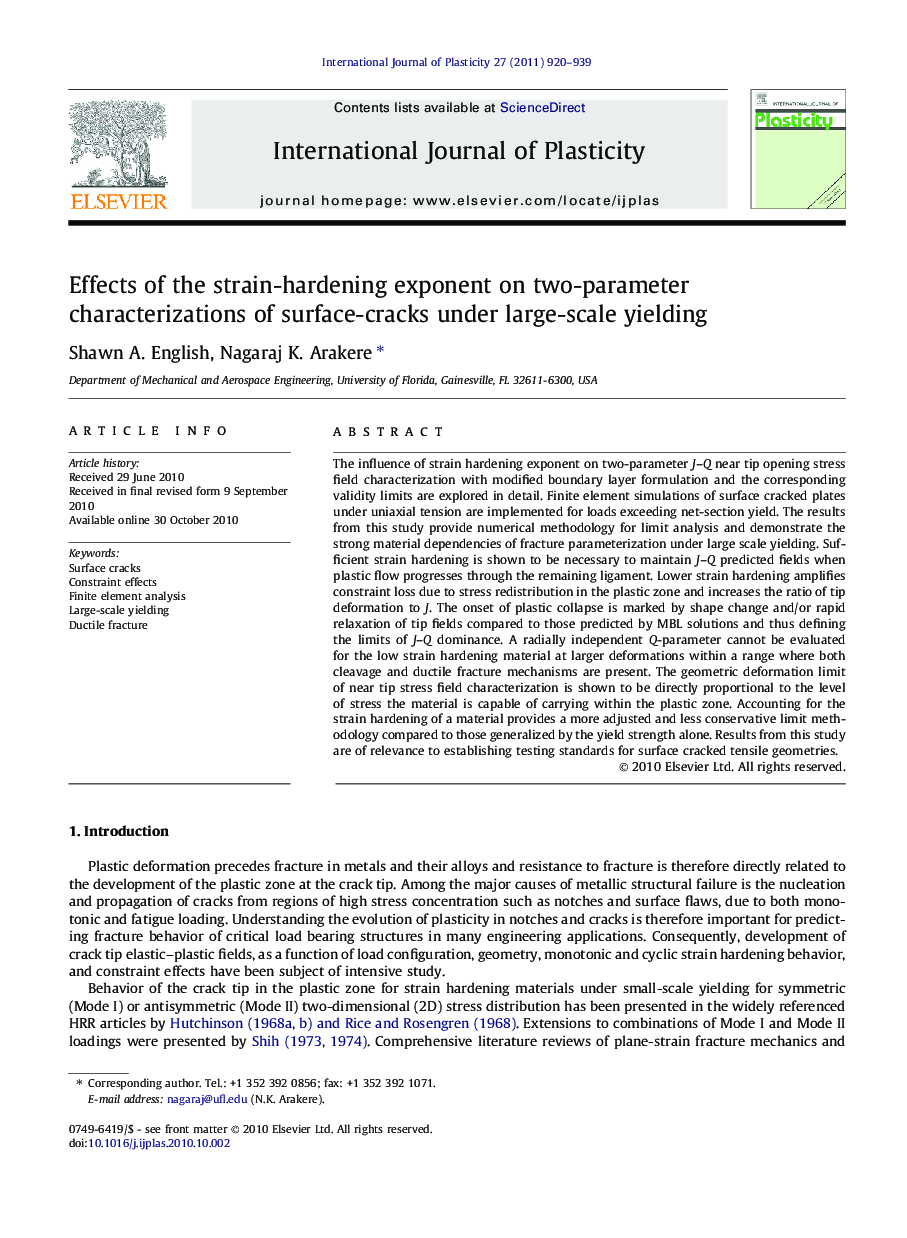| Article ID | Journal | Published Year | Pages | File Type |
|---|---|---|---|---|
| 789171 | International Journal of Plasticity | 2011 | 20 Pages |
The influence of strain hardening exponent on two-parameter J–Q near tip opening stress field characterization with modified boundary layer formulation and the corresponding validity limits are explored in detail. Finite element simulations of surface cracked plates under uniaxial tension are implemented for loads exceeding net-section yield. The results from this study provide numerical methodology for limit analysis and demonstrate the strong material dependencies of fracture parameterization under large scale yielding. Sufficient strain hardening is shown to be necessary to maintain J–Q predicted fields when plastic flow progresses through the remaining ligament. Lower strain hardening amplifies constraint loss due to stress redistribution in the plastic zone and increases the ratio of tip deformation to J. The onset of plastic collapse is marked by shape change and/or rapid relaxation of tip fields compared to those predicted by MBL solutions and thus defining the limits of J–Q dominance. A radially independent Q-parameter cannot be evaluated for the low strain hardening material at larger deformations within a range where both cleavage and ductile fracture mechanisms are present. The geometric deformation limit of near tip stress field characterization is shown to be directly proportional to the level of stress the material is capable of carrying within the plastic zone. Accounting for the strain hardening of a material provides a more adjusted and less conservative limit methodology compared to those generalized by the yield strength alone. Results from this study are of relevance to establishing testing standards for surface cracked tensile geometries.
